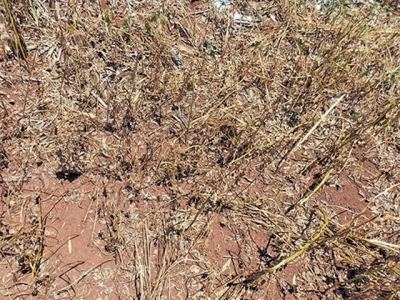How to control cucurbit viruses

It is also important to control aphids as these are the primary vectors of viruses. Apart from spreading viruses, they are up to no good anyway!
Use a herbicide to keep land verges free of weeds well before the start of the season; this can make an enormous difference to your yield. Photo: Bill Kerr
Even if they don’t actually introduce the virus into the land, they will certainly spread it further once it takes hold.
Symptoms
Cucurbit viruses manifest as mottled and distorted leaves, and the disease develops more rapidly in younger plants.
Symptoms may appear a few days to two weeks after infection. On more established plants, the older leaves and fruit may be unaffected and only the new growth from specific points will display symptoms.
Even before the first symptoms appear, the virus can infect aphids, which may then move to nearby plants and infect them.
You should therefore remove infected plants and conduct follow-up inspections to identify other plants that may have become infected.
Do not simply dump the plants; seal them in a plastic bag to destroy any surviving vectors.
This won’t stop the spread of the virus, but should slow it down if done in time.
Baby marrows are particularly vulnerable to infection. This is because farmers market the product over an extended season, and this requires handling the plants almost daily. Sap spilt due to rough handling by hand or with implements can transmit the virus.
Some farmers harvest baby marrows with a knife to save trimming them in the pack shed.
This method is best avoided, as it can spread the virus rapidly throughout the land.
The unfortunate fact is that a baby marrow crop is rarely harvested at old age without a virus sweeping through it at some stage.
The virus also has ample opportunity to spread rapidly to successive crops.
So, as far as is practical, try to plant new lands as far as possible from one another.
If harvesting an older and younger land simultaneously, start with the younger land to avoid spreading the virus from the old land to the new.
Various marrow hybrids are usually resistant to one or more viruses, but not to all. Plant a few varieties to determine which show resistance to the viruses affecting your land.
Other options
Alternatively, arrange to have an ELISA (enzyme-linked immunosorbent assay) carried out to determine which virus usually infects your lands, and select a variety with the required resistance.
Since virus in marrows is almost inevitable, some growers choose earlier-bearing varieties so that they can harvest as much of the crop as possible before the virus arrives.
Bill Kerr is a vegetable specialist and a breeder of a range of vegetables.
Có thể bạn quan tâm
 Tunnel farming with cucumbers methods for success
Tunnel farming with cucumbers methods for success Today, Charles Farming produces between 450 000 and 500 000 a year by tunnel farming with cucumbers, but when they were first shown the 2,2ha plot in Margate
 Mini-tubers for the seed potato market
Mini-tubers for the seed potato market On top of the Piketberg, Advanced Potato Propagation propagates mini-tubers in specially adapted greenhouses. Jay Ferreira speaks to APP’s manager
 Dealing with pumpkin flies
Dealing with pumpkin flies Pumpkin flies, which are slightly larger than houseflies, are similar to the fruit flies so well-known to fruit farmers.